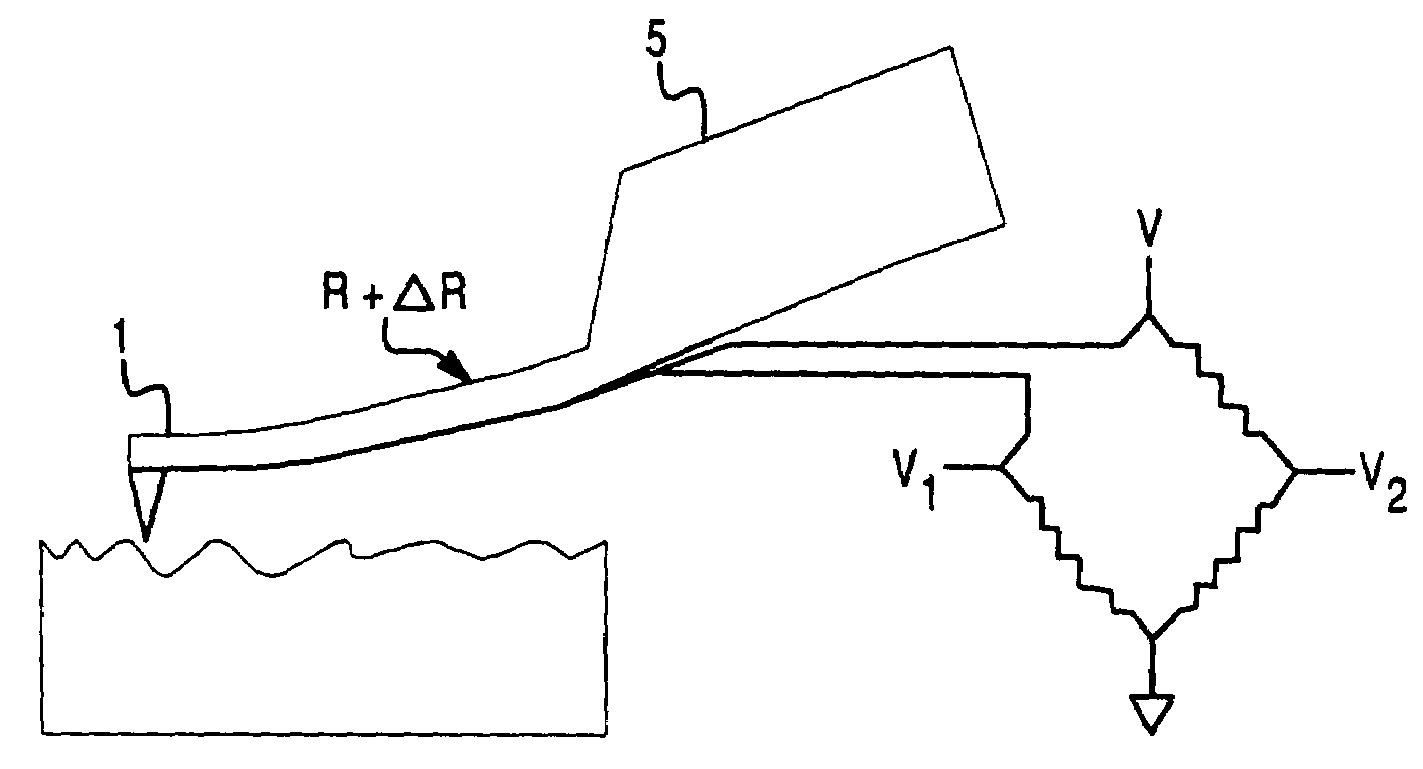Metallic thin film piezoresistive transduction in micromechanical and nanomechanical devices and its application in self-sensing SPM probes
a technology of piezoresistive transduction and metal thin film, applied in the direction of piezo-resistive materials, force measurement, mechanical roughness/irregularity measurement, etc., can solve the problems of complex and expensive fabrication process of semiconducting piezoresistors, such as ion implantation or molecular beam epitaxy, and relative large thermal noise floor
- Summary
- Abstract
- Description
- Claims
- Application Information
AI Technical Summary
Benefits of technology
Problems solved by technology
Method used
Image
Examples
application examples
Device Application Examples
[0045]FIGS. 5a and 5b illustrate an example of the use of the metal films in self-sensing cantilever probes for atomic force microscopes. FIG. 5a is a schematic and FIG. 5b is an SEM image of a micromachined cantilever (i.e., probe) 11 with the following micro-scale dimensions: 150 μm long×30 μm wide×4 μm thick. The probe 11 contains the cantilever 1, the notch 3, base 5, legs 7, metal film 9 and a sharp AFM tip 13. Preferably, but not necessarily, the metal film 9 is formed on the same side of the cantilever as the tip 13. The specific probe 11 shown in FIG. 5 is designed for tapping-mode AFM. Probes for contact mode AFM can be designed as well, but with much smaller spring constants, as will be described in more detail below.
[0046]FIGS. 12 and 13 illustrate the fabrication processes for both non-contact mode probes 11 and contact mode probes 21, respectively. As shown in FIGS. 12a-h, a method for making non-contact / tapping mode piezoresistive SPM probes ...
PUM
| Property | Measurement | Unit |
|---|---|---|
| size | aaaaa | aaaaa |
| size | aaaaa | aaaaa |
| thickness | aaaaa | aaaaa |
Abstract
Description
Claims
Application Information
 Login to View More
Login to View More - R&D
- Intellectual Property
- Life Sciences
- Materials
- Tech Scout
- Unparalleled Data Quality
- Higher Quality Content
- 60% Fewer Hallucinations
Browse by: Latest US Patents, China's latest patents, Technical Efficacy Thesaurus, Application Domain, Technology Topic, Popular Technical Reports.
© 2025 PatSnap. All rights reserved.Legal|Privacy policy|Modern Slavery Act Transparency Statement|Sitemap|About US| Contact US: help@patsnap.com



